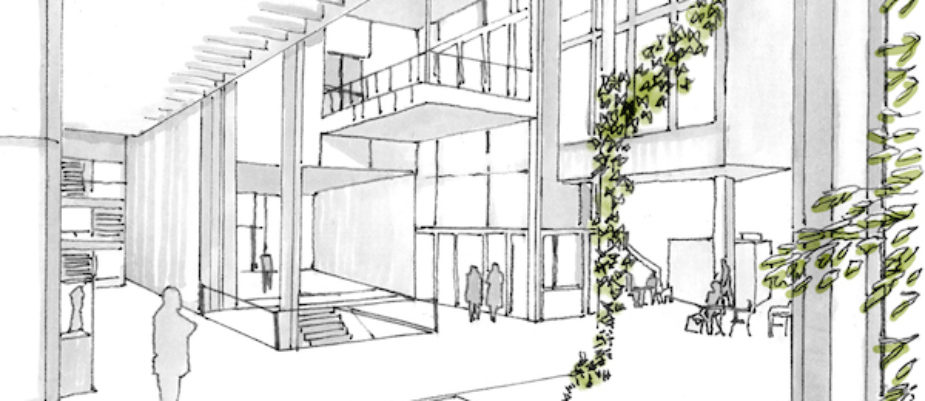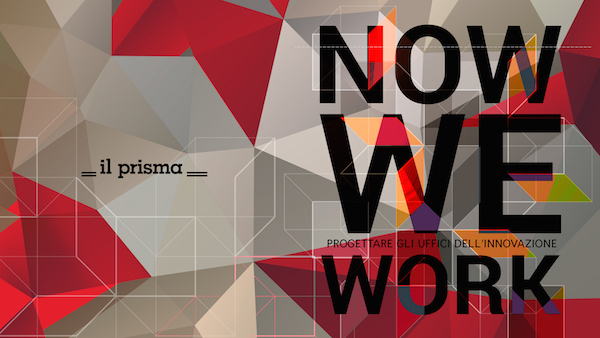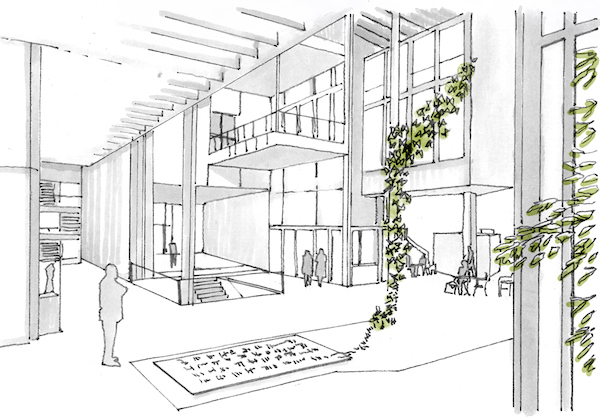
Now We Work is a study by Il Prisma carried out together with Politecnico, Laboratorio di Neuroscienze Applicate GTechnology and Università Cattolica di Milano. The research edited by McGraw Hill has involved architects, psychologists and neurologists, in order to define the office of the future, a place stimulating greater productivity, creativity and well-balanced interactions. Perhaps, as Carlo Galimberti pointed out, we’ll find some “manifest truths”, but no doubt it’s an interesting method to design the offices of innovation.
The goal wasn’t to find The solution, but rather to suggest a planning taking into considerations also the five senses on defining materials, lights and smells.
The text points out a multisensory path as a resource to carry out non-neutral offices.
The methodology Redefine your Habits created and applied by Il Prisma gives up the concept “design with”, replaced with the “design for” approach and renders Smart Working and the social requirement to live one’s relation with work at best, through places which are really on a human scale and for the benefit of the community.

1 WHAT THIS BOOK?
Now We Work concerns the design problems of the contemporary office.
The goal is not to offer ready solutions and standards, but give scientific foundation to the process of defining the needs of society in the process of transformation of spaces, in order to carry out a project on her sewing aspirations.
2 WHY THIS BOOK?
Workplaces, in the Western world, are being transformed into places that are more used for discussion than production. Mobility, made possible by technological innovations, and the need, to produce new ideas in order to be able to play a role on the scene of global capitalism, has generated dynamics which, for the sake of brevity we will simply list here: home office, remote working and co-working. Today, workers are defined knowledge workers, in search of places that make their creative activity easier. These places are no longer traditional offices but spaces that are effective for discussion, communication and training. Smart working is talked of, understood as letting people work where and when they want, insofar as they produce results, cutting costs and respecting the planet. We believe that reaching the shape of the spaces, their architectural design, requires knowledge and understanding of these dynamics. The client is a complex subject. A company often has a lengthy approval process, it has several souls coexisting in it and it does not necessarily have a clear idea of the type of transformation.
3 HOW THIS BOOK?
The architect needs to discuss with experts in other fields in the phase of defining the requirements of the client, often a multinational corporation. Often normal information acquisition for a project is delivered as a list of work groups, each with their own place in the environment. The information is deduced to an observation of what is already present and not an in-depth reality of the company’s needs. This vision is partial and only provided by one interpretation, that of who has been assigned to manage the process.
The analysis process and participatory design of Redefine Your Habits offered by Il Prisma originates from the same motivations and needs that are pushing companies and architecture studios towards more conscious and multidisciplinary design. It is not only a spatial change; beyond the physical and architectural sphere there is the involvement of the behavioural and technological ones. Introducing innovative solutions, such as the possibility of working in part of the office environment by simply bringing one’s own technology, can work if the physical creation of space is joined with the contextual education of the company’s population on how to properly use the environments, for example, to work towards objectives that go beyond the technical ability to design and structure them. The objective of our process is therefore to gather information that will be used as a design tool in office space design. It is a process that includes a series of cognitive moments, both qualitative and quantitative.

The architect needs, also, to verify some intuitions aimed at transforming the standards defined by legislation and regulations on comfort inside the offices (for example, the use of lights, materials, soundproofing systems). For example, the standards laid down by legislation in Italy for the lighting of work stations are no longer adequate for the use of PCs and iPads. We consulted neurologists and psychologists, seeking conformation for certain intuitions.
We related two experiments in the text published and entitled Now we work. Progettare gli uffici dell’innovazione (Now we work. Planning the offices of innovation), written together with the Università Cattolica of Milan, the Politecnico of Milan and the Laboratory of Applied Neurosciences of the GTechnology.
















